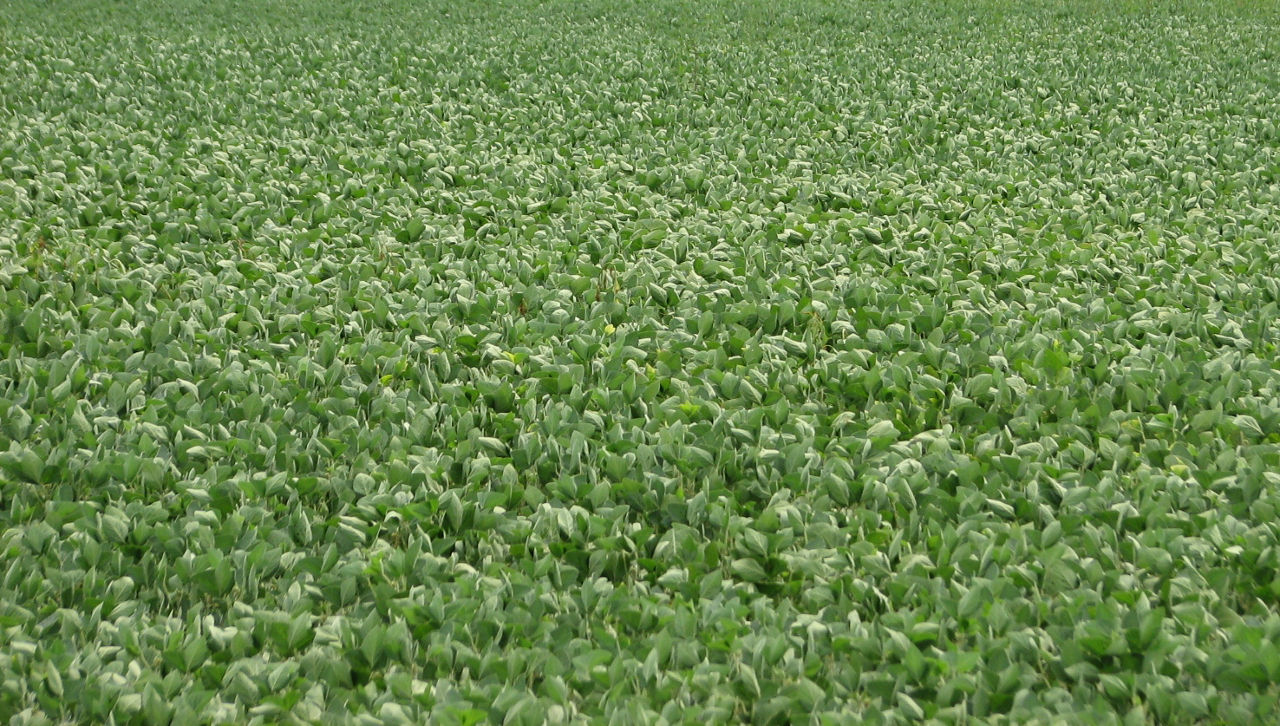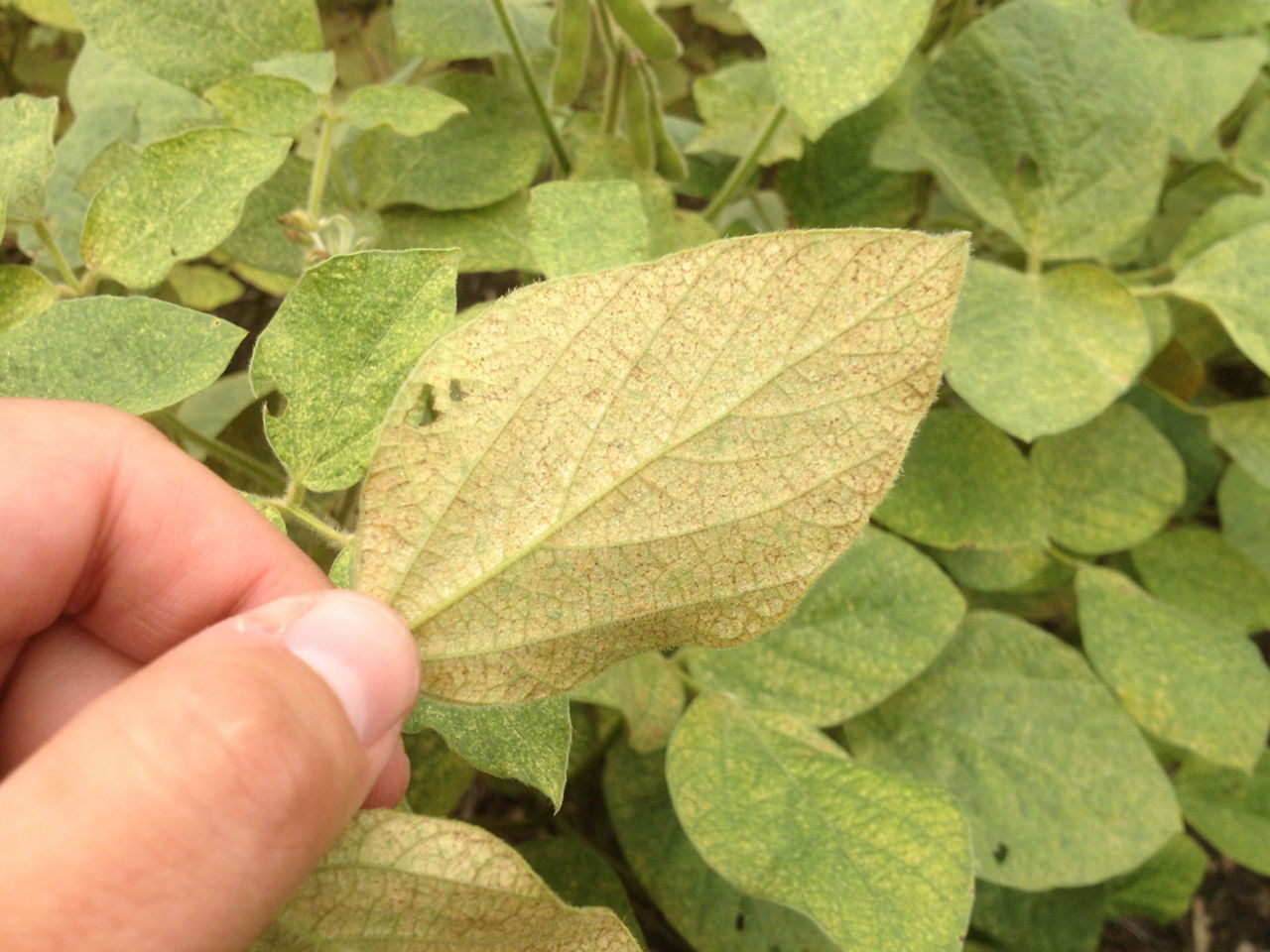3 MIN READ
Early Drought Stress in Soybean
April 9, 2025
KEY POINTS
- Drought has various effects on soybean, depending on the growth stage, from impeding germination to altering photosynthesis, above ground vegetative growth, and below ground root growth.1
- Management practices can be used to mitigate drought stress in soybean, such as altering planting depth and timing, using cover crops, and managing pests.
The Effects of Drought on Soybean Plants
Drought can have different effects on soybean depending on the timing of the drought during the crops’ development. Soybean crops are resilient to drought stress during the vegetative growth stages, but the major yield potential–reducing impact of drought on soybean occurs during pod set (R3) through pod fill (R6) stages. In the vegetative growth stages, only severe, prolonged drought serious enough to reduce the plants’ photosynthetic rate has been shown to have a negative impact on soybean yield potential.
Impact on Germination and Early Growth
A soybean seed must imbibe 50% of its weight in moisture from the soil to initiate the germination process. Drought conditions, large air pockets in the seedbed, or uneven moisture levels that affect the seed’s ability to absorb moisture can potentially reduce the final stand. Water stress can impact hypocotyl elongation as early as two days after germination. Although, root development may continue in this situation.2
A combination of dry soil conditions, little to no surface residue, and hot air temperatures can lead to elevated temperatures on the soil surface that are hot enough to injure soybean seedling stems, especially in sandy soils—causing a condition known as heat canker. Soybean seedlings are at risk for this injury from emergence to the V2 growth stage. The hypocotyl cannot tolerate hot temperatures and can be killed by contact with very hot soil. Heat canker injury to the hypocotyl may be visible as a ring or spot that may look dark, sunken, or pinched. This damage can be confused with injury caused by some pre-emergence herbicides, but herbicide damage is often wider spread across a field while heat injury tends to be sporadic. Heat canker is usually fatal to the seedling. The root systems of seedlings killed by heat stress will often remain the normal white color, which can help growers differentiate between this cause of death and death from some seedling diseases.3
Impact on Nodulation
Nodulation, the colonization of the roots by nitrogen-fixing rhizobia bacteria, can be reduced under drought conditions—particularly when accompanied by high soil temperatures. Nodulation begins when soil temperatures reach 63.5 °F shortly after emergence and continues to increase until beginning seed development (R5). Under mild drought conditions, nodulation is unaffected; however, under severe drought conditions nodules can be reduced. Hot temperatures are more detrimental to nodulation than water deficit. For most rhizobia, the optimum temperature for nodule growth is 77 to 86 °F while soil temperatures above 98 °F can reduce nodulation by directly killing rhizobia and altering the root hair growth and absorption of the rhizobia.4
Impact on Vegetative Stages
Water stress after emergence can cause plants to shift resource allocation from above ground growth—limiting plant height and leaf size—to root growth. Deep root development in particular tends to increase. This response to moderate drought stress is common in many plants. If adequate moisture returns, vegetative growth will resume. However, if severe drought conditions continue, flowering may occur earlier. Flipped leaves are the common soybean response to drought stress (Figure 1). Under severe drought, the trifoliate will clinch together, resulting in a sandwiched center leaflet. Both symptoms result in less photosynthetic activity, reducing the energy available to the plant.

Mitigating the Impact of Early Season Drought
Planting Depth
When dry conditions are expected, increasing planting depth from three quarters of an inch to one and a half inches will help ensure that all seeds have adequate moisture to germinate; this is particularly true with conventional tillage systems. Additionally, seeds placed at that depth may be more protected from extreme temperatures.
Plant Early
Early planting allows the plant to develop a deeper root system before the hot dry weather that may occur later in the growing season. This more developed root system can then better absorb moisture from deeper in the soil profile, reducing potential moisture stress.
Maintain Soil Nutrients and pH at Optimal Levels
The impact of drought on soybean can be increased when soil nutrient levels are low, and soil pH is below 5.5 or above 6.5. Nutrient deficiencies are usually an additive stress to drought stress and low levels of essential nutrients can restrict growth, furthering the impact of drought.
Tillage
Tillage can result in soil water loss, which can be severe enough to impact soybean seed germination and growth. Tillage during drought only increases the risk of water stress on soybean and reduces the amount of residue left on the soil surface. No-till or reduced till cropping systems help minimize water loss from the seedbed, and additional surface residue helps maintain moist and cool soil by providing shade and reducing wind velocity.
Row Spacing
Soybean planted in a narrow row (<30 inches) system will be more insulated from the influence of drought as the crop canopy will close quicker, reducing water loss from the soil by solar evaporation. Additionally, soybean planted in narrow rows tend to have a higher yield potential, especially in late planted environments like in a double-crop scenario.5
Weed Management
Competition from weeds only exacerbates the impact of drought on soybean. Using a weed management plan that creates a weed-free seedbed and provides control until canopy closure can help lessen the impact of drought.
Cover Crops
Many of the well documented effects of long-term cover crop use improve a crop’s drought resiliency, such as increased soil health, weed control, reduced runoff—especially on soils with significant slope—reduced soil erosion, increased water infiltration, and increased water holding capacity. These benefits vary with soil type, and sandy soils often show the most response to cover crop use during drought. However, it is important to consider which species of cover crop will be used, planting timing, and termination timing. Terminating the cover crop at the correct time is especially important during a dry spring season. The longer the cover crop is left growing in the spring, the less surface soil moisture is available for the soybean crop. Growers must customize their cover crop production practices to fit their farm’s soils and growing conditions year to year.6
Spider Mite Management
Hot and dry conditions foster spider mite outbreaks, which are usually first observed near field margins, especially next to dry, dusty farm roads along the southern field edge. Precipitation will usually stop a mite outbreak, but if a miticide is needed, ensure that the product chosen will not result in a mite flair up after application by inadvertently reducing mite predator populations.

Sources
1Sharma, V., Naeve, S., and Coulter, J. 2023. Early season drought effects on corn and soybean. University of Minnesota, Minesota Crop News. https://blog-crop-news.extension.umn.edu/2021/06/early-season-drought-effects-on-corn.
2Licht, M., Wright, D., and Lenssen, A. 2013. Soybean response to drought. Iowa State University Extension and Outreach. PM3046. https://lib.dr.iastate.edu/cgi/viewcontent.cgi?article=1190&context=extension_ag_pubs.
3McClure, A. 2011. Heat damage to soybean. University of Tennessee. UT Crop News Blog. https://news.utcrops.com/2011/06/heat-damage-to-soybean/.
4Abd-Alla, M.H., Issa, A. A., and Ohyama, T. 2013. Impact of harsh environmental conditions on nodule formation and dinitrogen fixation of legumes. In T. Ohyama, Ed. Advances in biology and ecology of nitrogen fixation. InTech. https://www.intechopen.com/chapters/45747.
5Double crop soybean production guidelines. Ohio State University. Soybean and Small grain Agronomy. https://stepupsoy.osu.edu/soybean-production/double-crop-soybean-production-guidelines.
6Dong, F. 2022. Cover crops, drought, yield, and risk: An analysis of U.S. soybean production. National Bureau of Economic Research. Working Paper 30122. https://www.nber.org/papers/w30122.